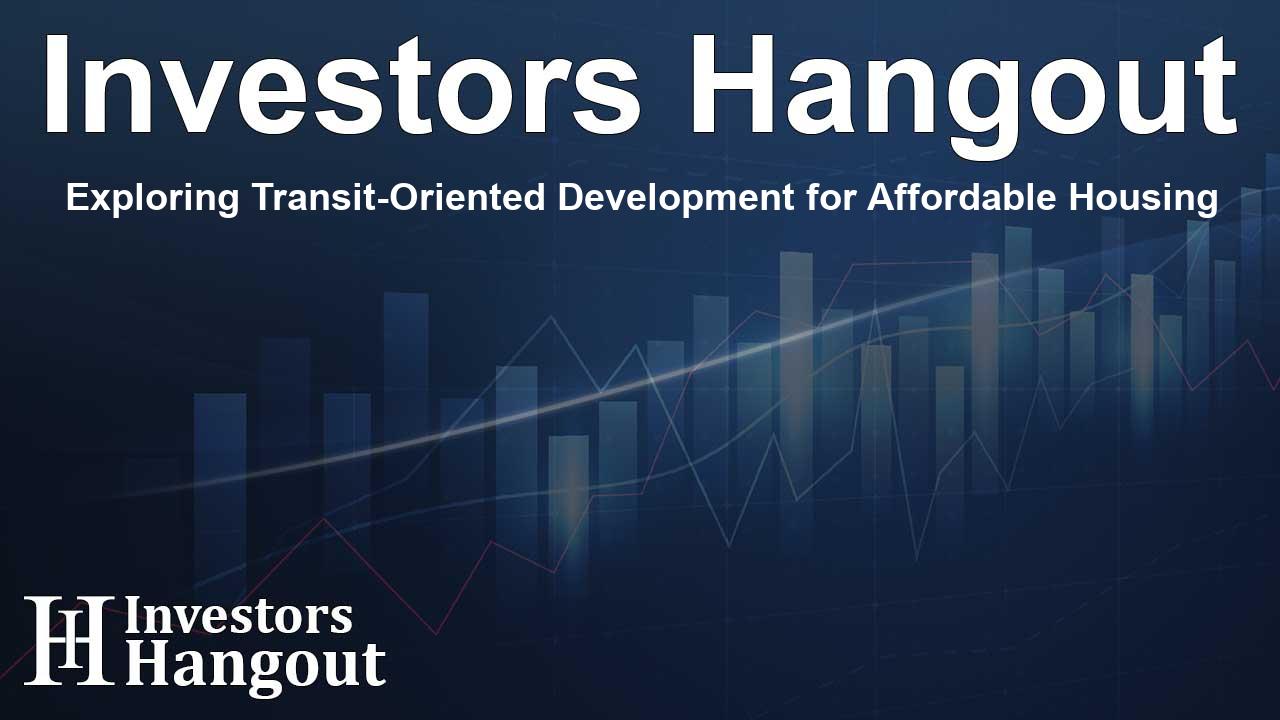Exploring Transit-Oriented Development for Affordable Housing

Understanding Transit-Oriented Development
Transit-oriented development (TOD) is an urban planning strategy that promotes high-density housing and businesses near public transportation hubs. It aims to create walkable neighborhoods where residents can easily access jobs, shopping, and services without relying heavily on vehicles. This model is crucial in addressing the dual challenges of urban housing shortages and the need for sustainable transportation.
Opportunity for Affordable Housing Production
The emphasis on TOD presents unique opportunities for increasing affordable housing production. As cities continue to grow, it's vital to ensure that new developments not only serve affluent residents but also provide options for low- and moderate-income families. By focusing on areas with robust transit options, communities can work towards creating accessible housing solutions that cater to diverse populations.
Panel Insights from Industry Experts
During a recent event hosted by the Office of Policy Development and Research, several discussions centered on enhancing equity in TOD. Industry leaders shared their insights on fostering inclusive neighborhoods. Kristy Chambers from the Columbus Community Center highlighted the importance of mixed-income communities, while Chris Iglesias of The Unity Council emphasized access for underrepresented groups.
Ensuring Equity in Housing Developments
The panel titled "Putting the 'e' in TOD: Ensuring Equity in Transit-Oriented Development" explored how equity can be achieved through well-planned developments. Experts argued that creating affordable housing near transit can help marginalized communities thrive while reducing dependency on cars, thus lowering transportation costs for families.
Leveraging Transportation Resources
Another key discussion focused on effective ways to leverage existing transportation resources to promote affordable housing. Jake Day from Maryland's Department of Housing and Community Development discussed strategies for integrating housing and transit initiatives to optimize federal, state, and local funding. Cory Fellows highlighted the role of partnerships in utilizing transportation networks effectively to enhance housing availability.
Future Directions for TOD
The future of transit-oriented development looks promising, particularly with increased awareness of the need for equitable housing solutions. The collaboration between housing developers, urban planners, and transportation authorities is essential in ensuring that new projects meet the needs of all community members.
Engagement and Community Participation
Community engagement plays a critical role in the success of TOD initiatives. Developers and city planners must actively involve local residents in the planning processes to understand their needs and priorities better. Public involvement not only fosters transparency but also cultivates a sense of ownership among residents, leading to more successful and sustainable development outcomes.
Frequently Asked Questions
What is transit-oriented development (TOD)?
Transit-oriented development (TOD) is an urban planning approach that focuses on creating high-density housing and commercial spaces near public transportation to facilitate easier access to essential services.
How can TOD promote affordable housing?
TOD can increase affordable housing production by positioning low-income housing units in areas with easy access to public transit, thereby reducing the reliance on cars and associated transportation costs.
What are the benefits of equitable TOD?
Equitable TOD ensures that all community members, regardless of income or background, have access to essential services and transportation options, fostering diverse, inclusive neighborhoods.
How does community engagement influence TOD projects?
Community engagement ensures that the needs and concerns of residents are considered in the planning process, promoting transparency and fostering a sense of ownership, which can lead to more successful outcomes.
What strategies can be employed to enhance TOD equity?
Strategies include partnering with local organizations to develop affordable housing, ensuring inclusive policies are enacted, and providing accessible transportation options for all socioeconomic groups.
About Investors Hangout
Investors Hangout is a leading online stock forum for financial discussion and learning, offering a wide range of free tools and resources. It draws in traders of all levels, who exchange market knowledge, investigate trading tactics, and keep an eye on industry developments in real time. Featuring financial articles, stock message boards, quotes, charts, company profiles, and live news updates. Through cooperative learning and a wealth of informational resources, it helps users from novices creating their first portfolios to experts honing their techniques. Join Investors Hangout today: https://investorshangout.com/
Disclaimer: The content of this article is solely for general informational purposes only; it does not represent legal, financial, or investment advice. Investors Hangout does not offer financial advice; the author is not a licensed financial advisor. Consult a qualified advisor before making any financial or investment decisions based on this article. The author's interpretation of publicly available data shapes the opinions presented here; as a result, they should not be taken as advice to purchase, sell, or hold any securities mentioned or any other investments. The author does not guarantee the accuracy, completeness, or timeliness of any material, providing it "as is." Information and market conditions may change; past performance is not indicative of future outcomes. If any of the material offered here is inaccurate, please contact us for corrections.









